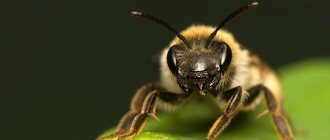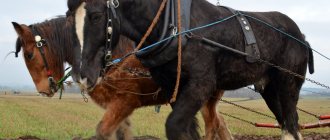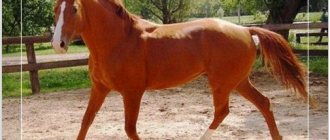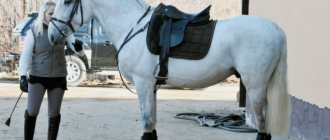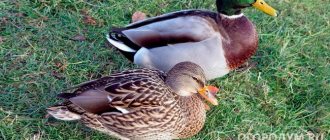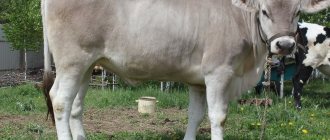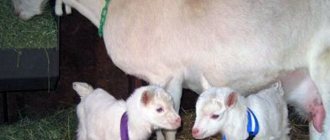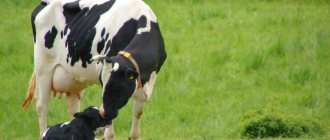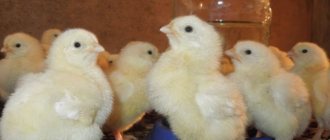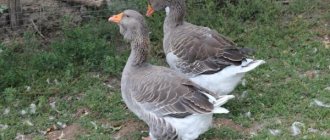The Oryol Trotter is the first factory-cultivated breed of horse in Russia. Brought out at the end of the 18th century. Count Alexei Orlov, she played a big role in the development of domestic horse breeding. Today, elegant and stately Oryol horses are called a living brand of Russia and are used in almost all types of equestrian sports and in breeding.
Origin story
In 2016, the Orlik breed turned 240 years old. Its creation and formation is a whole layer in the history of Russian horse breeding.
The breed was named after its founder, the famous commander and comrade-in-arms of Empress Catherine the Great, Count Alexei Orlov-Chechensky.
Being a cavalryman, he knew firsthand how fast and hardy horses were needed by the state.
This event, which occurred on June 28, 1762, is considered the beginning of the development of the breed.
The future Empress Catherine II traveled from Peterhof to St. Petersburg (just over 30 kilometers) in a carriage drawn by Neapolitan horses. Unable to withstand the Russian roads and distance, the horses stopped halfway due to impotence.
The situation was saved by Catherine’s companion, Count Alexei Orlov. He gathered tired peasant horses from the surrounding villages and sent the empress to the capital. At that time, according to historians, he promised Catherine that he would breed a good transport horse.
Count Orlov began his first experimental breeding work on the Ostrov estate near Moscow. In 1762, the Empress granted him lands in the Voronezh province. There he built the famous Khrenovsky stable and continued breeding trotters.
History connects the gray Arabian stallion Smetanka with the official breeding date of the Oryol trotting breed in 1776.
Count Orlov bought it from the Turkish Khan for 500 thousand silver coins. The silver-white stallion gave the future trotters the desired lightness and nobility of appearance.
Oryol horses inherited their strength and endurance from the massive Dutch and Danish sows. It took about 30 years of complex reproductive crossbreeding before Count Orlov and his assistant Vasily Shishkin achieved this result.
According to some sources, about 15 different breeds of horses were used in breeding.
The stallion Polkan turned out to be the most productive son of Smetanka. From him and a Dutch mare, the first representative of the breed, Bars I, was born in 1784. The gray trotting stallion met all the criteria of the breed in terms of exterior and working qualities.
For the next 20 years it was used as the main producer. From him and his sons (Lebed, Usan, Lyubezny) come the breeding lines of all Orlovs.
The Oryol lynx was registered as a separate breed in the breeding catalog of the Ministry of Agriculture of the Russian Federation in 2007.
Historical data
Oryol trotters were bred in the 18th century. At that time horses were the main means of transport. When traveling long distances, the horses broke into a gallop. This type of riding is faster, but has disadvantages:
- horses get tired earlier;
- animals smash their shoulders;
- crews are subject to strong storms and are more easily damaged;
- people feel uncomfortable and feel sick.
European varieties couldn't help. The animals were heavy and quickly exhausted. A new domestic breed solved the problem.
The breeding was carried out by Count Orlov A.G., who was looking for horses for selection in different parts of the world. I used, for example, Dutch, Neapolitan, Arabic. The decisive role was played by the stallion Smetanka. The count and his talented assistant, V.I. Shishkin, used an innovative system of training and selection of young animals.
The light-harness breed turned out to be large, beautiful, hardy and very fast. They named the new pedigree in honor of the count - Oryol.
These were horses for all occasions. The Oryol horse was suitable for parades, long journeys, agricultural work and cavalry. Thanks to the excellent, familiar trot, the animals did not get tired for a long time while running, and the carriages shook less. There have never been such breeds in history.
Oryol horses had great speed. Sometimes they set records, including world ones. These trotters spread throughout the Russian Empire and were sold abroad. They were favorites at international exhibitions and competitions.
At the end of the 19th century, a standard brand breed was brought to us. American trotters defeated the Orlov team in the race. As a result, many Russian horse breeders began to mix these two breeds.
The situation was turned around by pure Orlovets Krepysh. His victories made breeders think. The Oryol horses had potential, and they were “rehabilitated.”
In addition, American rivals were taken out only for records. Domestic trotters, in addition to speed, also had appearance, character, strength and other advantages. The defeats were partly explained not by genes, but by deficiencies in training and maintenance. For example, the horses’ legs were not protected, which reduced the results and maimed the horses. Animals were often beaten and lost at cards.
In Soviet times, overseas impurities were finally abandoned. Pure breed Oryols have become larger. Many showed better results than Krepysh.
In the 90s, stud farms went bankrupt. Oryol horses died of starvation or were sent to the slaughterhouse. The family tree was on the verge of extinction. She was saved by amateurs and specialists from Russia, other CIS countries, and France. Today, the number of Oryol residents is gradually being restored.
Description of the breed
Photo:
One of the oldest, popular factory horse breeds in Russia. Oryol trotters are distinguished by their high trotting speed and pass on their traits to their descendants, due to which stallions of this breed are widely used as improvers in mass horse breeding.
Oryol trotters are large horses. Height at withers 157-170 cm; stallions are on average 162 cm, and mares are 161 cm. The average oblique body length of a stallion is 161 cm, chest girth is 180 cm, metacarpal girth is 20.3 cm; average weight - 500-550 kg.
The modern Oryol trotter is a harmonious draft horse with a small dry head, a high swan neck, a heavily muscular back and strong legs.
These are beautifully built horses, balanced, moderate in temperament and well trained. Their posture is proud and graceful, with subtle, vertical movements of both tail and mane.
Character
The character of Oryol trotters is lively, calm, kind, and easily establishes contact with people. Breeding stallions are temperamental and playful, but they are good at following the rider's commands if trained correctly. They are not shy, but are cautious, which makes them similar to Arabian horses.
Intrabreed types
There are three types of exterior that are bred in different nurseries:
- average (“average”).
- dry (“prize”, light);
- massive (“thick”, more like a heavyweight);
Popular suits
The most common suits are gray, light gray (“white”), red-gray, gray-amber and dark gray suits. Also common are sorrel, black, and less commonly red and spotted.
Bulan and saltmarsh powder are rare, but they can also be found. The cream gene entered the gene pool of the Oryol trotting breed through the Polkana I dam.
Usage
Despite its name, the Orioles Trotter is a versatile breed. It is used
The eagle trotter is used in equestrian sports under saddle (jumping, dressage). Its main use is in harness (pairs, triplets, quadruples). Today the eagle is popular not only in trotting racing, but also in carriage driving.
Russian cab drivers loved Oryol trotters for their ability to run long distances at an even pace. The horses have a wide and regular trot, during which the carriage hardly shakes even on rough roads.
In Soviet times, well-balanced Eagles were used in police cavalry.
In domestic horse breeding, the Oryol horse is used for the selection of draft breeds, improvement of agricultural breeds and some riding breeds.
Why is it called that?
Horses have 4 main colors:
All others are considered derivatives from them. Each horse may exhibit bullseye markings on its sides. This is not exactly a color, but rather the presence of lighter spots than the main background throughout the body. They are round in shape and arranged in a certain sequence. Therefore, the drawing is compared to fruits hanging on the branches.
Horses born in apples are darker: black or bay. Gradually the color becomes lighter and spots appear. The number of such marks varies from several dozen to complete staining of the body. In young animals, the spots are more pronounced; with age, the coat becomes lighter, and the apples may disappear completely.
Advantages and disadvantages
According to breeders, the advantages of Oryol trotters include:
- High reproductive rates.
- Inaccuracy regarding housing and feeding conditions;
- Tolerance towards people;
- Calm disposition;
- Stability of genes in the transmission of trotting traits;
- ability to trot for a long time;
- Impressive appearance;
- Their versatility;
- High speed performance for racing;
- Ability to adapt to different climatic conditions;
Disadvantages, which are not serious, sometimes include:
- Late achievement of puberty (at the age of 4.5-5 years).
- The high cost of each animal;
Breeding
Oryol trotters are a late-ripening breed; the development of individuals is completed no earlier than 5 years of age. The Oryol trotter is a late maturing horse; a young trotter reaches full maturity at the age of 5 years.
Despite their late maturity, Oryol trotters are distinguished by their long life span and high fertility.
Depending on the conditions of detention, hereditary factors and other circumstances, the average fertility varies. At least 80-90 foals are born per 100 mares per year.
To obtain offspring, two methods are used: natural pregnancy and artificial insemination. Both methods are based on the correct selection of the stallion.
It is assessed according to three criteria: conformation (appearance), energy (dexterity) and color. The insemination process for mares begins in February and ends in June.
Foals remain with their mother from birth until 6 months of age, and only after that they are transferred to specially designated areas (groups).
The training of young foals begins immediately after weaning, and already at the age of 2 years they “pass the exam” by participating in races at the hippodrome.
Content
For all its elegance and nobility, the breed of eagles is not demanding in terms of living conditions. It adapts well to new climatic conditions and new feeds.
Horses are cared for as usual at home. However, in racing facilities, during testing and training, the quality of special care is fundamental to the health and performance of the trotter.
Mandatory procedures:
- Preventative work before races and prizes - the use of hot blankets and mustard plasters.
- Preventative measures after racing and training - muscle massage, rubbing with straw, disinfection;
- Preventive measures after racing or training include brushing, combing, combing the mane and tail, and cleaning the hooves;
- Prevention of tendon and ligament diseases - bandaging, clay dressings, special ointments;
- daily cleaning of feeders and drinkers, washing once a week with warm water and baking soda;
- Daily cleaning of the barn in the morning and evening - removing manure and wet bedding, loading fresh bedding;
Feeding
The feeding ration largely depends on the purpose of the horse, as well as on age, sex and physiological condition. The basis of the diet is grass and hay.
Preferably hay from meadows, clover and alfalfa. Also add the oatmeal-vinegar mixture, wheat bran and carrots. As for grains, horses are fed oats, corn and barley.
In addition to traditional feeding, breeding and sport horses receive
- herbal granules;
- haylage;
- protein and vitamin and mineral supplements.
- Mixed feed;
- silage;
- syrup;
- cake;
Carrots and sugar beets are considered dietary succulents.
Preparation and feeding rations:
Feed horses at least 3 times a day, with heavy work in between and during breaks. First roughage, then concentrates 60 minutes before work. Half of the daily ration of roughage is fed at night.
Water is given 3 times a day before feeding, but not earlier than 1.5-2 hours after physical activity.
Stable care
Such a large and energetic animal requires a fairly spacious barn with boxes measuring 3x3 meters.
In winter, temperatures can drop below zero for a short time, and Oryol trotters and their foals tolerate this quite easily, provided there are no drafts.
However, warmth is better for horses, so the walls of the stable should be insulated (for example, with polystyrene), and there should be bedding at least 20 cm thick on the wooden floor:
- straw;
- hay;
- dry peat
- sawdust;
It should not be too hot in the barn (the optimal temperature never exceeds +23°C, and air humidity is between 45-50%). In order to increase the amount of daylight in winter, the barn must be artificially lit.
Important: The stable should be dark at night so that the horses can rest well, so artificial lighting should be turned off at night.
Horse stalls must be equipped with feeders and drinking bowls.
Typically, a wooden plank feeder is installed so that it is accessible from both inside and outside the barn. The same applies to drinkers.
This makes it easier to fill and maintain feeders and waterers without disturbing the horse.
Disease Prevention
To keep trotters healthy, you need to not only take good care of them, but also keep their stalls hygienically clean. To do this, remove manure daily and change soiled bedding (dry bedding is the best way to avoid dermatitis).
The feeder and drinker should also be cleaned at least once a week with warm water and baking soda. The walls and partitions of cubicles should also be cleaned regularly.
As a precaution and in case of health problems for trotters, you should stock up on a first aid kit:
- alcohol and salt;
- iodine and camphor;
- bandage;
- a mixture of Vaseline and fish oil;
- camphor alcohol;
- hoof ointment;
- cotton wool
- turpentine;
- turpentine;
- hydrogen peroxide;
Nutrition
Oryol breed horses are energetic animals. In addition to hay and grass, their diet includes vitamin and mineral supplements, grains and vegetables. The share of concentrated feed in the horse's menu is 25%. The fruits of grain crops are a source of protein, which is necessary for active animals to maintain good shape.
Grain crops for horses
Attention! It is especially important to properly plan the diet of foals. It includes fish oil, salt, and vitamins. A lack of minerals and trace elements can lead to malformations and diseases.
Famous Oryol stallions
Strength
- Bars 1, the ancestor of all lines, played a special role in the development of the breed.
- Square, the pride and symbol of Moscow Stable No. 1, born in 1946, was the only stallion to whom two monuments were erected during his lifetime. He never lost a single race in his entire career. She gave birth to more than 600 thoroughbred trotters.
- Krepushin is the “horse of the century”; he set a Russian record at a distance of 1600 m, covering it in 2 minutes and 8.5 seconds. A strong horse gave hope to the entire Russian horse breeding during the years of rapid development of the American trotter.
- Cowboy is the modern Russian record holder. In 1991, the chestnut stallion, ridden by rider Mikhail Kozlov, showed a time of 1 minute 57.2 seconds.
- Pion is an invincible stallion of Soviet times, the ancestor of the popular line of large Oryol horses - the Pion line.
The modern speed record was set by the stallion Sorrento, the only Russian horse to compete in the most prestigious prizes abroad. Sorrento clocked 1.56.8 over 1609m in Nice under Mikhail Kozlov. At the moment, there are no horses faster than Oryol trotters in horse racing.
Interesting Facts
Oryol trotters became a source of inspiration for the work of many writers - Leo Tolstoy, Alexander Kuprin and others. An example of a literary work can be a book by this author. An example of a literary work is the book by Peter Shiraev “Taglioni’s Grandson”. (1928) about the eagle trotter Least.
The writer A.I. Gertel, himself a native of Voronezh, where the famous Khrenovsky establishment is located, described the life associated with breeding Oryol horses in the novel “Gardens, Their Courtiers, Supporters and Enemies.”
Eagle trotters are depicted in many works of art, e.g.
- Paintings by Russian artist Nikolai Sverchkov (1817-1898), who especially often mentioned Oryol trotters in his works.
- The painting “Oryol trotters in harness and a dog” (1861) by the German artist Rudolf Zurlandt from the collection of the Museum of Horse Breeding of the Moscow Academy named after K. A. Timiryazev.
The following films are also known:
- “Lyubushka” - 1961 film based on the book by P. Shiryaev “Taglioni’s Grandson”.
- “The Trotter” is a film based on P. Shiryaev’s book “Taglioni’s Grandson” from 2005.
- “Krepush” is a 1982 film about an Oryol trotter named Krepush.
The Oryol horse breed has been repeatedly reproduced on postage stamps of several countries:
- Moldova - 2002 R,
- USSR - 1968
- Ukraine - 2005
- Azerbaijan - 1993, 1997,
- Tanzania 1991,
- Bhutan 1999,
- Russia - 2007,
About Count Orlov - briefly
Count Orlov is the brightest historical character. He was one of those who elevated Catherine the Great to the throne, a remarkable naval commander who received the title of Chesme for the defeat of the Turkish fleet. Alexey Grigorievich was a talented breeder who had limitless possibilities. In addition to the Oryol trotter, he managed to breed the Oryol riding horse breed (now called the Russian riding horse or Oryol-Rostopchinskaya), and the Oryol tumblers (a breed of pigeon that has survived to this day).
He was also an ardent fan of cock and goose fighting, and was one of the authors of the Oryol breed of chickens. He was engaged in fine-wool sheep breeding, hunted with greyhounds and hounds, and bred a breed of pointing dogs (which has not survived to this day). There is information that the count greatly appreciated canary singing.
But he became famous not only as an outstanding breeder. He created a system for testing horses and managed to train a large number of equestrian professionals: veterinarians, riders and breeders. His thirty-year selection work was continued by the serf Shishkin. Subsequently, Shishkin received his freedom, and after the death of the count he founded his own factory.
As you know, Count Orlov did not sell stallions from the stud, a few were donated to him, but after his death many horses were sold. Later, Orlov’s daughter Anna donated the stud farm to the treasury along with the remaining horses.
